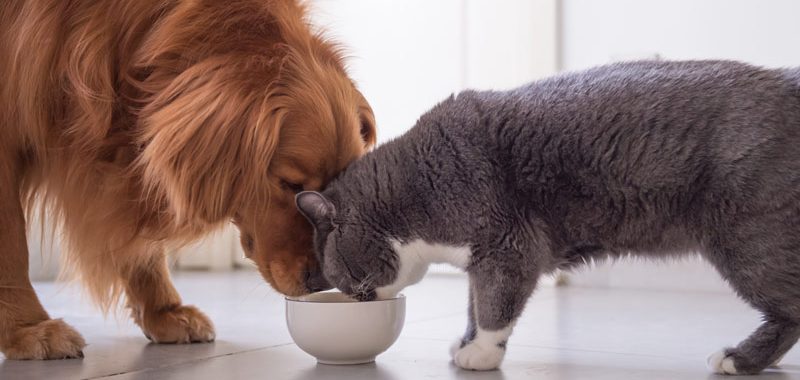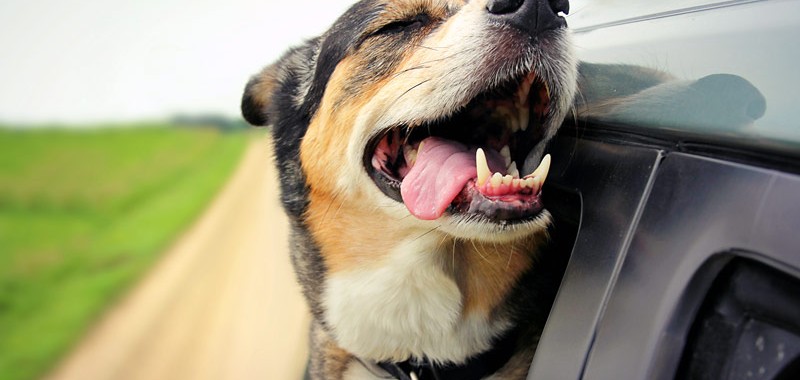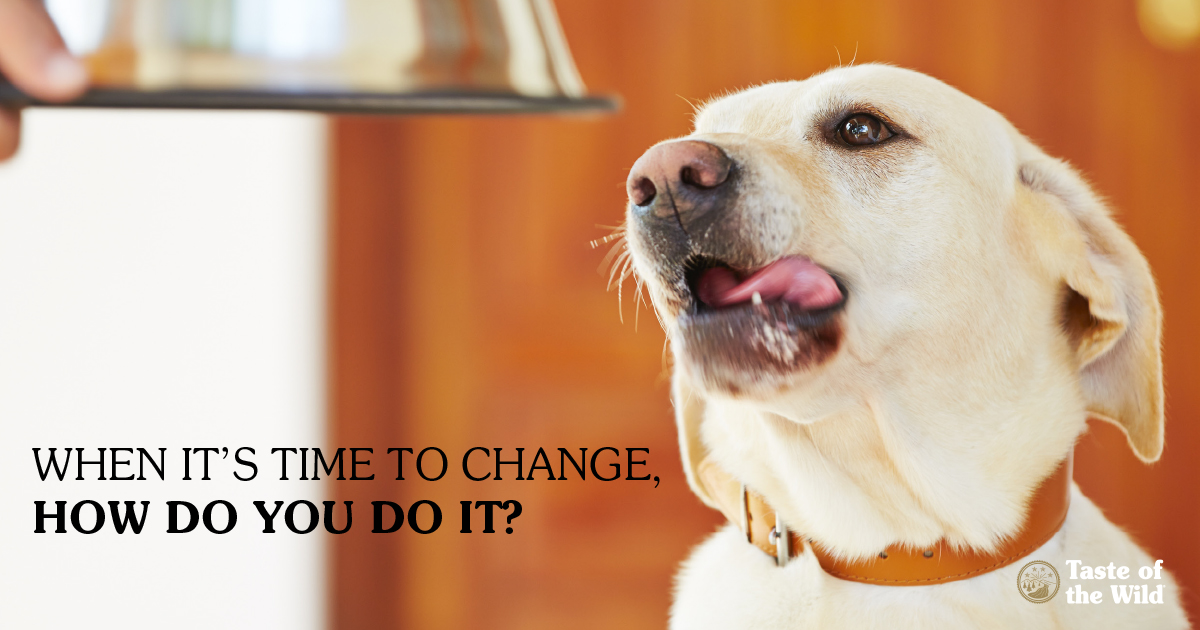
Food for Every Stage of Life
There are many reasons to switch pet foods, including changes in your pet’s healthy, activity levels, age, or behavior. Just like people, pets have different nutritional requirements at different stages of life. A puppy or kitten’s needs are vastly different from that of an adult dog or cat. The same holds true for your senior pet, who may have difficulty digesting what was easier to digest as a younger pet.
Making a Pet Food Switch
There are other reasons for switching pet foods, however. Maybe you want to try a new formula, such as ingredient or brand preferences (GNH has a variety of high-quality pet food brands available, such as Taste of the Wild and Blue Buffalo).
According to the Taste of the Wild blog, it’s important to note that if your pet suddenly stops “enjoying” his current food, you should consult your veterinarian before making a switch. If your pet is sick, it can actually do more harm to change his or her diet before the illness itself is resolved.
The Right Way to Change Your Pet’s Diet

No matter the reason for switching, you should always transition slowly to a new kind of pet food or your pet may experience some bad belly aches and digestive upsets! By practicing patience, however, your pet can make the transition seamlessly to his or her brand-new diet.
Good Things Come to Those Who Wait
You should take at least 7-10 day (or up to 14 days for pets with sensitive stomachs) to transition from your current pet for to your new pet food. The idea is to add a little bit of new pet food each day, while subtracting the same amount of old pet food. This method allows your pet’s system to slowly adapt to the new food, and prevents jarring digestive troubles. You can visualize the transition this way:
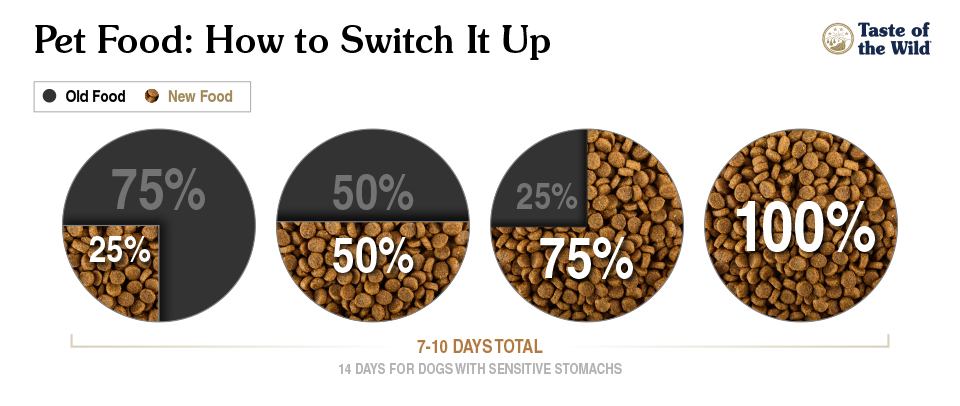
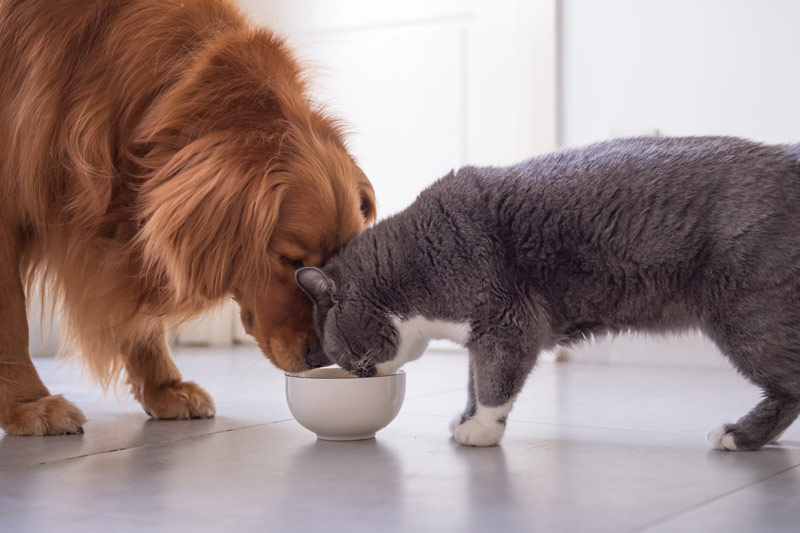
Beware of Switching Too Often
A word of caution: It might seem like a good idea to change your pet’s diet whenever you see a sale on new pet food, but think again. You might end up paying more in the end for vet bills if your pet’s diet is disrupted too frequently.
The best feeding practices for your pet’s good health is to choose a brand you trust, and stick with it – unless your pet has a specific, adverse reaction, or if his life cycle changes. Consistency is better for your pet’s overall digestive health.
Sources: https://www.tasteofthewildpetfood.com/how-why-to-change-your-pet-food/

